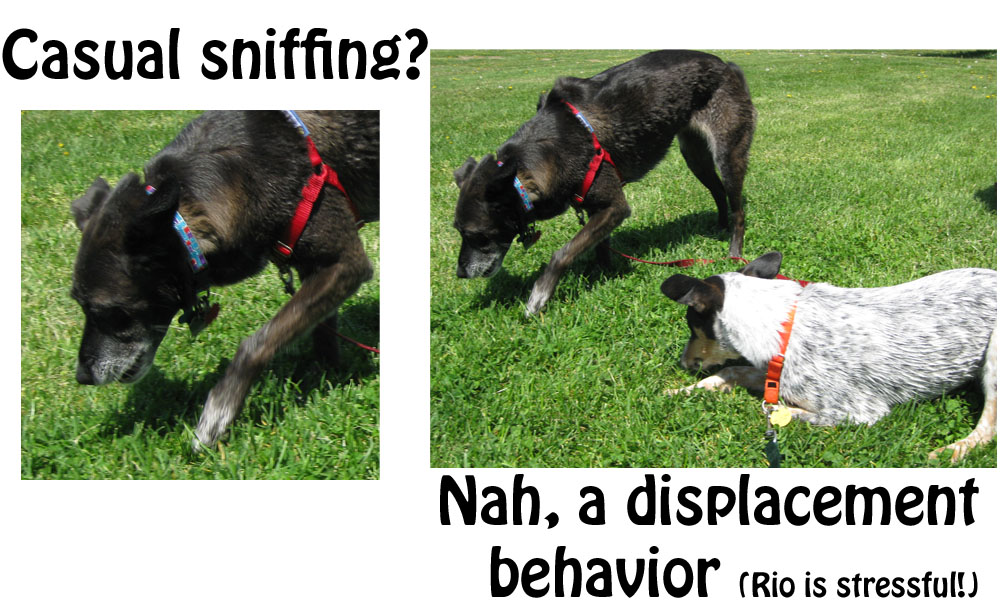I had such a good time reading through all the blogs from the Blog The Change event. If you haven’t had an opportunity, I really suggest checking out some of the great blogs.
I wanted to take a moment and expand on the idea of my blog for the event about Denver the “guilty” dog. I want to talk a bit more about canine body language and how we should approach reading dogs.
Dogs are not verbal animals–while they have a variety of vocalizations, their primary way of communicating with each other is through body language. There are many nuances and subtleties that we as humans are oblivious to or simply do not notice. But, there are quite a few behaviors that we can easily notice and that we have a decent amount of information about so we can give educated guesses about the meaning of the signals. Reading dogs, however, is not about picking out the individual calming signals etc. It’s about the big picture being displayed by a dog–how the behaviors relate in the context of the event or how the behaviors may be connected to one another. Oh and knowing your individual dog and their baseline or normal behavior can be very valuable.
Since dogs communicate the majority of the time through body language, there is an extensive “dictionary” of movements or positions that comprise canine language. Posture, head carriage, tail carriage, gait, facial expressions, and body positioning/movement are all pieces of the puzzle. Whale eyes, commissures pulled forward, cheeks puffed out, whiskers forward, ear flicks, lip licks, shake offs, lifted paw, head tall, tail back, body curved, tense face, ground sniffing, tucked tail, face licking (licking humans), stiff body, soft eyes, ears pinned back, mouth open, and curled lips are just some of the things dogs use to communicate.

Truth be told I do not remember the context of this particular sniff... but Risa is known to sniff as a displacement behavior 🙂
When reading dogs it’s not about focusing on one of these behaviors/positions/movements. You really need to look at the body as a whole and how everything is connected. One of the best examples I can give is about Rio. He is part sight hound and as such, he often carries his tail somewhat in between his legs. I had him at a pet store and he was soliciting attention from someone in the store. He stood on his hind legs and his tail was tucked pretty tightly between his legs/under his belly. The person asked me why he was so afraid. I asked what made her say that and she mentioned his tail. Meanwhile he was all but crawling into her lap with a very relaxed face, soft eyes, relaxed ears, and a loose body. Yes, looking at the tail alone may indicate he was uncomfortable but everything else said that he was not only comfortable but loving the attention.
When you are assessing a dog’s intentions, feelings, and/or behavior, it is necessary for you to look at the big picture. Focusing on a single feature will not provide an accurate picture. The other thing to consider is that many of these behaviors will happen independently and have no real ‘meaning’ for a given situation–sometimes a yawn is just a yawn. So you not only have to evaluate the big picture of the dog but also the context in which the behaviors were presented.
While working with Dexter on his car chasing issues, I have come to notice that right before he reacts he will puff his cheeks a few times. When I notice this, I can tell he’s about to go over threshold and that I need to, in someway, step in and divert his path.
I guess what this is all pointing to is to check out some dog body language books/DVDs and take some time to notice your own dogs’ behaviors. Sometimes you have to look at the little things and sometimes it’s the big things… but both are very important to begin to recognize. So your dog dislikes bath time… how do you know that–what type of body language tells you that he/she is unhappy about the situation?

